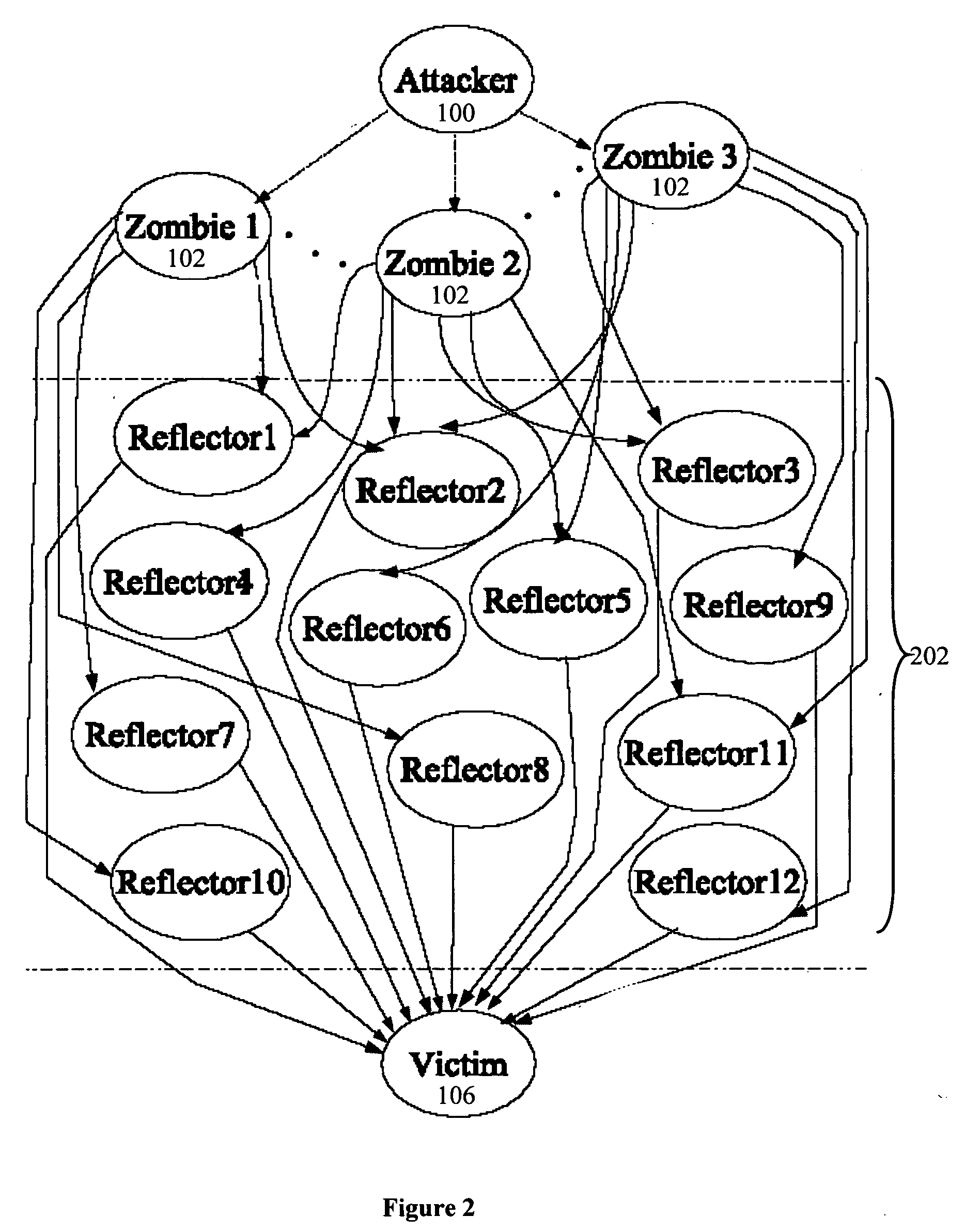System and process for managing network traffic
a network traffic and process technology, applied in the field of system and process for managing network traffic, can solve the problems of routers near the victim or the victim itself to fail under the load, the internet is even more dangerous, and the victim is near the victim or the victim itsel
- Summary
- Abstract
- Description
- Claims
- Application Information
AI Technical Summary
Problems solved by technology
Method used
Image
Examples
examples
Detection of a DDoS Attack
[0113] To evaluate the efficacy of attack detection, the following simulation experiments were performed. Different types of DDoS attack traffic were generated and merged with normal traffic. The traffic management system 300 was then applied to detect the attacks from the merged traffic. The normal traffic traces were taken from publicly available data sets collected at different times from three different sources. The first set was gathered at the University of Auckland with an OC3 (155.52 Mbps) Internet access link, as described at http: / / wand.cs.waikato.ac.nz / wand / wits. The second data trace is taken from the DARPA intrusion detection data set, available from http: / / www.ll.mit.edu / IST, and the third data trace was taken on a 9 MBit / sec Internet Connection in Bell Labs, as described at http: / / pma.nlanr.net / Traces / long / bell1.html.
[0114] A summary of the data traces used in these experiments is listed in Table 2 below. In order to evaluate the effective...
PUM
 Login to View More
Login to View More Abstract
Description
Claims
Application Information
 Login to View More
Login to View More - R&D
- Intellectual Property
- Life Sciences
- Materials
- Tech Scout
- Unparalleled Data Quality
- Higher Quality Content
- 60% Fewer Hallucinations
Browse by: Latest US Patents, China's latest patents, Technical Efficacy Thesaurus, Application Domain, Technology Topic, Popular Technical Reports.
© 2025 PatSnap. All rights reserved.Legal|Privacy policy|Modern Slavery Act Transparency Statement|Sitemap|About US| Contact US: help@patsnap.com



